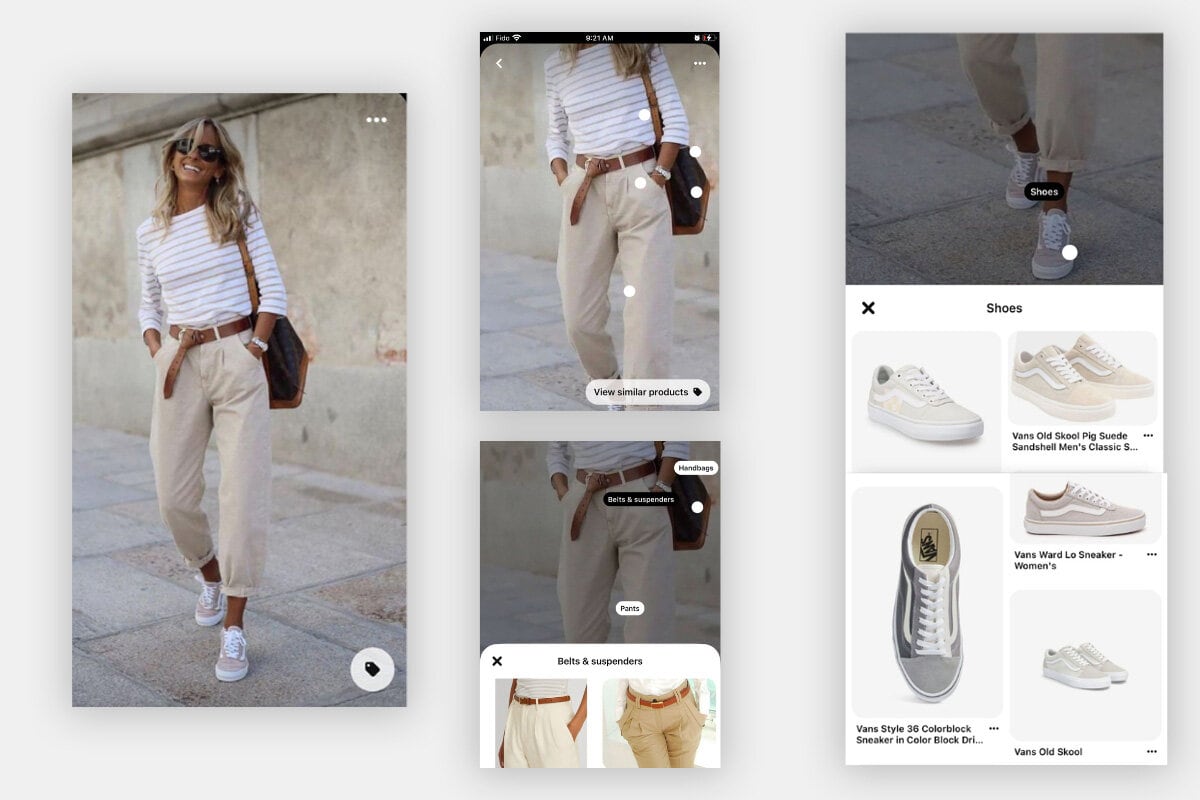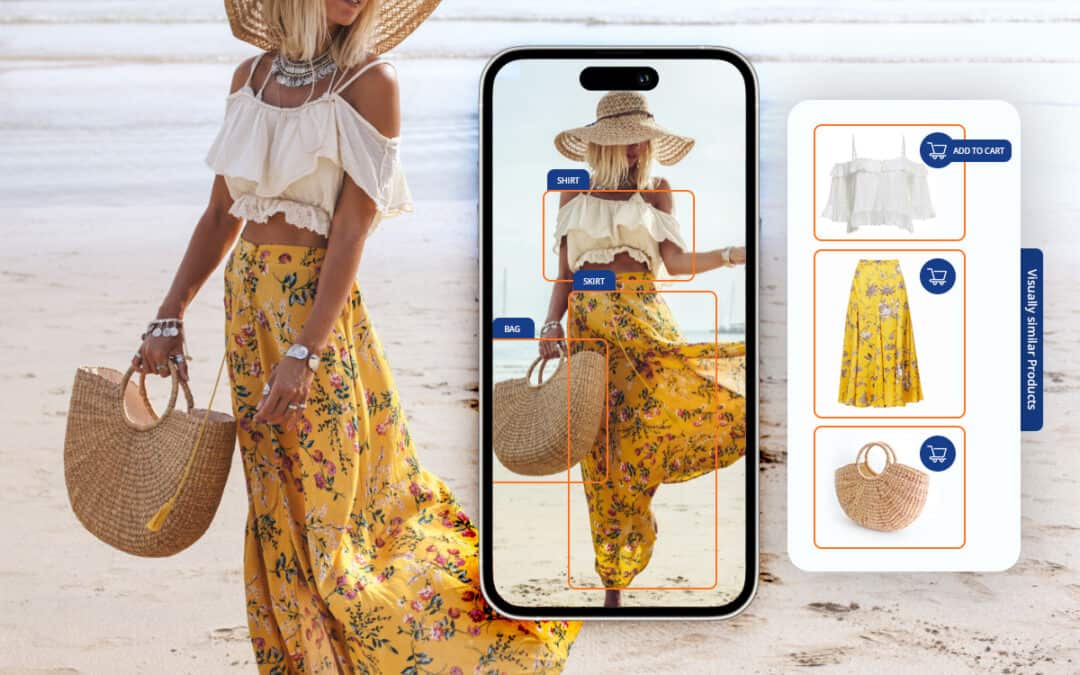We all know what to do when we see the long, thin box on the front of Google’s home page: enter a brand name or a product category to help its search engine take us on the next step of a shopping journey.
As omnichannel marketing and selling become more sophisticated, however, many of us will soon be keeping our eyes open for brands that offer another option: visual search.
What is Visual Search?
Rather than typing in text to a search engine or using a voice assistant to make a query, visual search involves uploading or somehow adding an image to browse for answers online.
The formats for visual searches could include a photo that shoppers have taken while browsing the aisles or racks of a physical store or a screenshot they’ve taken from a website, among others. Once they’ve done so, the experience is much like that of a traditional Google search, where they see similar items to whatever appears in the image and links back to the source of the content.
Launching a visual search eCommerce strategy
Though your use of visual search will depend in part on the products you’re selling and the needs of your customer base, the following steps are a great way to get started:
1. Identify visual search examples that align with your brand
Though it may be less familiar than other forms of browsing the Web, several visual search tools are already widely available to consumers. Google Lens, for instance, uses artificial intelligence such as machine learning to identify objects, translate text, and look for information by pointing your smartphone camera at an object like a dress or piece of furniture.
Depending on the image it’s scanning, Google Lens can take shoppers directly to a brand’s eCommerce website or a third-party online marketplace that contains inventory matching what’s being shown.
Microsoft has also moved into the visual search arena by adding features to Bing Chat. This means that when customers land on a site that uses it, a Bing visual search feature will allow people to upload images as part of the “dialogue” they have with the chatbot to streamline the process of getting the response they want.
There is a Pinterest visual search option as well. Pinterest Lens works by simply tapping the camera icon on its app, pinching or zooming in to an object, pressing a button, and then exploring anything similar that’s been published on other boards.

Even Apple has made sure to incorporate visual search tools into its Vision Pro headset, which complements similar capabilities on the iPhone and iPad.
2. Make a business case for visual search tools based on human behavior
The connection between online search and visual data is nothing new. Consider the fact that since launching more than 20 years ago, Google Images now accounts for 10% of the company’s daily search traffic.
Research has found that visual information makes up 90% of what’s transmitted in the brain, perhaps because 40% of nerve fibers are linked to our eyes’ retinas. That could explain why we can get a sense of what’s going on in an image in less than 1/10 of a second.
You only have to scroll through TikTok or Instagram to see how emphasizing visuals has transformed social media, which are among the top channels for trying to reach younger demographics. No wonder eMarketer published data in 2022 showing that 30% of U.S. adults aged 34 and younger have used visual search for shopping, and 12% were already using it regularly.
3. Study the brands that are already using visual search
If you’re still not sure that providing customers with visual search tools is a priority, just look at some of the leading brands that have already moved forward.
IKEA, for instance, has integrated visual search into its app, enhancing the augmented reality experience that allows consumers to create interior designs from wherever they are. Glasses USA has done something similar with a tool called “Pic and Pair” to help consumers find the best designer frames for their faces.
Nordstrom, meanwhile, has been offering visual search eCommerce for several years, and Wayfair makes it easy to use images as part of its search experience as well.
4. Check which online marketplaces are offering visual search eCommerce
Shoppers are not only depending on using images when they land on a brand’s eCommerce site but when they’re looking to promote products on third-party online marketplaces as well.
Asos, for instance, has made it easy for online shoppers to upload an image of a piece of clothing they like to its marketplace app and serve up recommended items directly from its product catalog. Amazon is also at the forefront with its Shop The Look software to shop for clothes and accessories.
5. Craft compelling images to make the most of visual search tools
Once you’ve understood the technology and recognized where your products can be found using visual search, you’ll need to ensure you have the right content to make the most of it. The art of developing product visuals that will work well with emerging search technologies isn’t rocket science. It follows many of the same best practices that brands may already have adopted when they learned about image optimization as part of creating Google Shopping Ads.
To drive more conversions, for example, you’ll want to stick with clutter-free images in common formats like JPEG or TIFF. You should also pay attention to the structure of URLs, and sizing and ensure you’re showing products in use.
Building an effective and successfull Social Commerce Strategy
Using visuals to drive sales is all part of turning your social channels into a shoppable storefront. This can be a powerful strategy whether your brand is promoting products on Snapchat or similar platforms. The important thing is to ensure you have a technology partner who can help customize your product feed data to each channel, manage your catalogs and inventory data, and monitor product performance.
This is where Highstreet.io can help – social commerce is just part of the solutions we offer to some of the world’s most successful fashion and luxury brands. Another example of meeting customers where they are is being present on the most relevant online marketplaces. That’s why it’s critical to have partner experiences in integrating products across multiple marketplaces while ensuring accurate and up-to-date inventory.
Connect with our team to learn how we can help you see the big picture around visual search commerce to grow your business.

